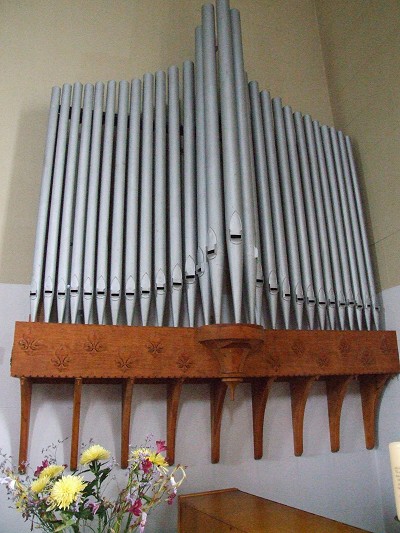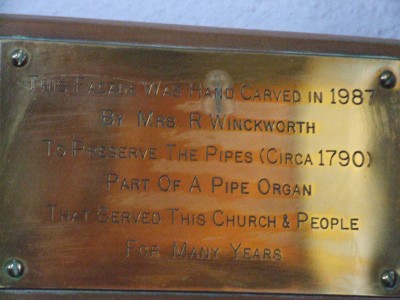Hi!
Thanks so much for posting this. This goes to show just what _good_ electronic design and clearly proper speakers can do. Bearing in mind that this was just analogue electronics, the current hype that apparently Hauptwerk is so wonderful it can overcome the limitations of mis-chosen speakers and still achieve realism must be questionable. If good speakers can make an analogue organ sound like this, then proper treatment of the Hauptwerk output can only be advantageous.
The bad news is that it lasted so long :-) but the good news is that it was so superb that it has inspired the building of a new pipe organ.
It's for this reason that I see electronics _well_ installed as being good for pipe organs in the long run.
Well installed does not include commercial electronics touts putting speakers behind the facades of pipe organs and removing pipework to do so: that is vandalism, plain and simple.
One of the saddest and most frustrating things I've seen in a while is the gravestone in Alderney Methodist Church:


. . . put to death by the installation of an unused 3 manual analogue Johannus.
Best wishes
David P
Thanks so much for posting this. This goes to show just what _good_ electronic design and clearly proper speakers can do. Bearing in mind that this was just analogue electronics, the current hype that apparently Hauptwerk is so wonderful it can overcome the limitations of mis-chosen speakers and still achieve realism must be questionable. If good speakers can make an analogue organ sound like this, then proper treatment of the Hauptwerk output can only be advantageous.
The bad news is that it lasted so long :-) but the good news is that it was so superb that it has inspired the building of a new pipe organ.
It's for this reason that I see electronics _well_ installed as being good for pipe organs in the long run.
Well installed does not include commercial electronics touts putting speakers behind the facades of pipe organs and removing pipework to do so: that is vandalism, plain and simple.
One of the saddest and most frustrating things I've seen in a while is the gravestone in Alderney Methodist Church:


. . . put to death by the installation of an unused 3 manual analogue Johannus.
Best wishes
David P
